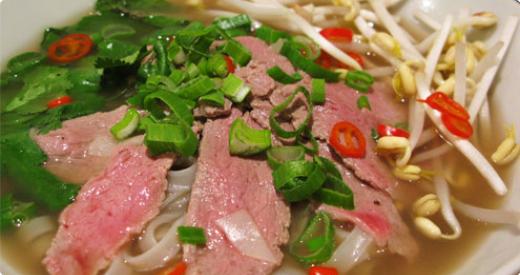
When travelling to an unfamiliar country, there is nothing quite like sitting shoulder to shoulder with neighborhood locals at a hawker stall and taking that first bite. Street food is a wonderfully evocative part of experiencing culture. Recently, Lonely Planet travel guides have released the book “The World’s Best Street Food” written by food writers all over the world featuring popular examples from Thailand to Poland. For gourmands all over the world, street food has an irresistible allure, offering up the promise of authenticity unvarnished by marketing, celebrity, fads, ratings or pretensions. It’s real, it’s cheap and it offers up just a little bit of risk to make it exciting.
Hawker stalls have has thrived through many cities in Asia because eating is not necessarily restricted to three sit-down meals but occurs throughout the day. For example, the famous bowls of fragrant pho noodles or goi cuon spring rolls can be found on various street corners in Vietnam for a quick meal on the go or a simple snack in the middle of the day. Motoring through the Ho Chi Minh City on the back of a moped, we can pass by a variety of small stalls, piled high with the fresh herbs and meat. Burners fueled by a propane tank, woks, stockpots and buckets of water serve as makeshift outdoor kitchens. Hungry patrons squat upon plastic stools in a long line along the sidewalk as they tuck into their tasty snack.
Carts hitched to the back of a bicycle brings gives another meaning to eating on the go. Street food is by nature fast food. The preparation tends to be fairly quick and uncomplicated. Nicknamed the national dish of Vietnam, pho is a simply rice noodles and thin slices of raw beef cooked in beef broth. Garnish with sprouts, mint and basil leaves and the next customer can be served in less than a minute. The ever popular banh mi sandwich requires only the assembly of grilled pork, tomatoes, cucumber and homemade chilli sauce in a crispy baguette. Wrap pork, shrimp, vermicelli, fresh herbs, vegetables in soft rice paper and you have a goi cuon spring roll.
While McDonald’s golden arches, the grinning countenance of KFC’s Colonel Sanders and the bright red roof of Pizza Hut have become ubiquitous features of cityscapes throughout Asia, street hawker culture is slowly changing as well. Vietnam has also felt the presence of American and other Western fast food franchises. As the culture embraces foreign fast food, local vendors have slowly been diminishing in number.
Many street vendors do not have the mandatory licenses for legitimate food service. In promoting the image of a modern city and in response to concerns on hygiene, local authorities have looked to clean up and in some cases close down street food businesses. Bloggers in the city have reported routine accounts of police descending upon and confiscating food stalls . And yet, the street vendors persevere. Minutes after a police raid, another stall will be dragged out from an alleyway—the wok fired up, ingredients tossed in and hawker life continues.
Related stories :
– Which country has the best street food? Find out how Asian Palate readers voted in our earlier poll.
– In October, Jeannie explained why street food tastes better than restaurant food in Bangkok as she explored pairing Thai food and local wines .
– Picks up some tips on haute Vietnamese cuisine in Hanoi .
– The best dai pai dong in Hong Kong is… find out the favourites of culinary professionals.
– Asian Palate explored the American food truck phenomenon and whether the trend will be rolling into Asia next.









